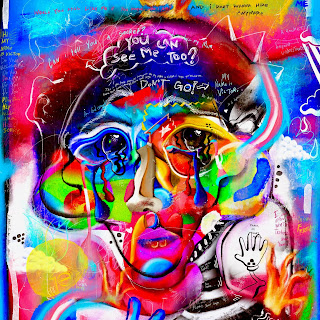NFTs may be a term you are familiar with. NFT stands for a non-fungible token, which you could even be aware of. However, you might not be fully aware of what it entails and the significance of this new technology for businesses, artists, and other producers.
It's likely that you first learned about NFTs via a news report about an outrageous buying price, such as when Beeple the artist sold his work of digital art Everyday: For $69 million, The First 5,000 Days:
Let's start by studying the fundamentals before we discuss the significance of NFTs beyond their exorbitant price tags.
The definition of non-fungible
An item that may be exchanged for an identical object is fungible. Consider a $1 banknote. The value of a $1 note is the same for all $1 bills in circulation, including yours and mine. They may be substituted for one another, in other words.
Contrarily, a non-fungible thing is one-of-a-kind and cannot be duplicated or replaced. Non-fungible items include the Statue of Liberty, the Mona Lisa, and a Super Bowl ticket. They are unique, in other words.
In the cryptocurrency world, if I own one Ethereum token (ETH), it is fungible since its value is equal to that of any additional ETH tokens that I or anybody else may have. The Crypto Coven, on the other hand, is a profile image NFT project I now own that features illustrations of witches with unique backstories created for each of them. Since just one of the 9,757 Crypto Coven NFTs in existence resembles mine identically, mine, dubbed soursop the cloudless (seen below), is a non-fungible token (NFT).
On the blockchain, surviving (sort of)
The easiest way to define a blockchain is as a distributed, decentralized server. In contrast to a more centralized ecosystem like Amazon, when you engage with a blockchain like Bitcoin, you are not just sending a transaction to a server farm. Instead, sections of your transaction will be verified concurrently by thousands of computers (known as miners). As a result, the blockchain is very secure and virtually impossible to hack.
Simply said, a token is a cryptocurrency asset that exists on the blockchain. Both tokens and blockchains come in a wide variety. Ethereum is the most often used blockchain for NFT projects since it was designed to allow developers to build applications on top of it. NFTs include code known as a "smart contract"—a computer program that executes when specific circumstances are satisfied and is recorded on the blockchain (more on this later).
You may be imagining my Crypto Coven NFT at this point simply sitting on the blockchain until I decide to sell it. That wouldn't be entirely accurate.
When it comes to storage capacity, blockchains are pretty constrained. Everything that ever happens on the blockchain will be there forever, therefore this is by design. On the Ethereum blockchain, there is a record that certifies my ownership of my NFT, but the actual picture is not available. Where is it then? Typically, images and other digital assets are kept elsewhere. The Interplanetary File System, which is likewise a decentralized system, is one of the most well-liked storage options.
Some NFTs are on-chain, which means they are entirely kept on the blockchain. The most well-known of them is Cryptopunks, a 10,000-piece collection of pixelated figures that are presently going for at least 62 ETH ($201,894.95). One of the most sought-after NFT projects is Cryptopunks, which is also one of the oldest initiatives ever. A prime example is CryptoPunk #3100, which sold for the highest price ever at 4,200 ETH ($7.58M).
Why NFTs will be crucial for businesses and artists?
In certain instances, creators have given whoever owns their NFTs complete commercial licence rights. Bored Ape IPA from North Pier Brewing Company and the limited-edition "Drink Your Peas" beer can with Bored Ape #3500 from Alternate Ending Beer Co. are now available from two distinct craft breweries that use Bored Ape NFTs artwork.




.jpeg)







0 Comments